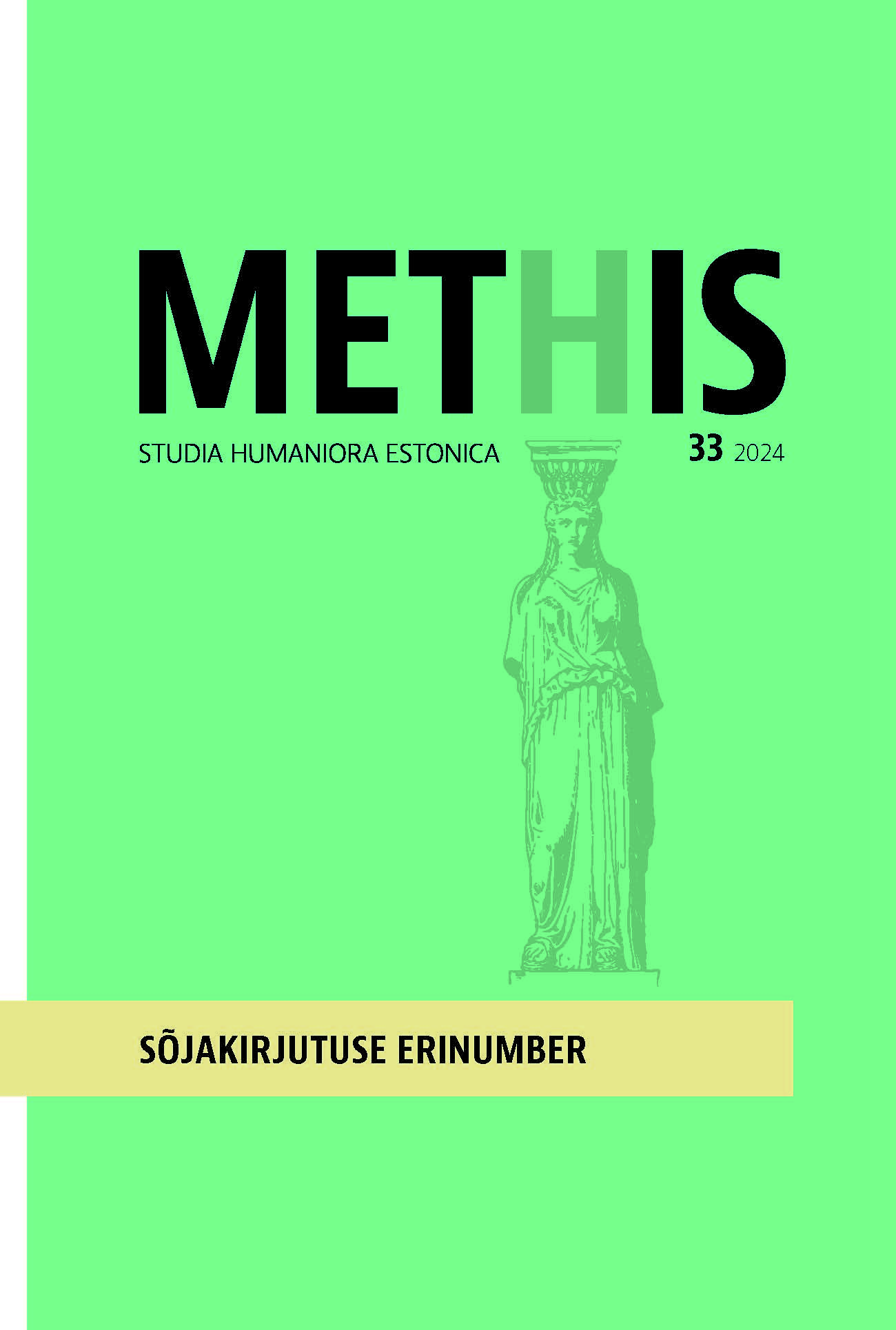Ema mälestusi lugedes. 1926. aastal sündinud naise meenutused sõjaaegsest ja -järgsest argielust / Everyday Life and Memories of War. The Memories of a Woman Born in 1926
DOI:
https://doi.org/10.7592/methis.v26i33.24130Keywords:
cultural memory, memories, occupation, Second World War, experience of trauma, kultuurimälu, mälestusjutustus, okupatsioonid, sõda, sündmus, traumaAbstract
Teesid: Artikli aluseks on Pärnumaa väiketalus sündinud-kasvanud Linda Teesalu, artikli autori ema mälestused, mille ta pani kirja järeltulijaile mõeldes oma pika elu viimasel aastakümnel. Talletatud mälestuste põhjal analüüsin, mil moel tulevad Teise maailmasõja sündmused ja selle järelmõjud esile üleskirjutustes, mille keskmes on argielu, ning kuivõrd aitab mälestustega tutvumine toimunut paremini mõista. Üksikisiku mälestused moodustavad koos teiste inimeste mälestustega võrgustiku, milles tulevad esile põlvkondlikud mustrid. Kirjalikud jutustused ja teistelt kuuldud lood möödunust annavad omakorda mälule tuge. Sõja ja okupatsioonidega seostuv traumakogemus puudutab ka neid inimesi, kes ei sattunud otseselt sõjaväljale, küüditamise või vangistamise ohvriks.
In this article, I analyse to what extent and in what way the events of the Second World War are reflected in memoirs that do not focus directly on the events of the War, but on everyday life. I use the memoirs of my mother Linda Teesalu, born and raised on a small farm in Pärnu County, recorded in the last decade of her long life. She wrote down her memories primarily with her descendants in mind, although doing so also had a highly therapeutic function for her.
Researchers of cultural memory have observed that we must not underestimate society as an environment of memory. In Soviet Estonia it was practically impossible to make memoirs public without editing them. The collapse of the Soviet Union also led to a boom in the collection of biographies and memoirs in Estonia. In biographical writing, the events of people’s personal life and the events of ‘great history’ converge. The result is a constructed past which the writer recreates from his or her own memory, and often that of their loved ones, from the ‘present’ of the time of writing. My mother’s most detailed memories are of her childhood and adolescence, the days of the first Republic of Estonia. In describing events and everyday life, my mother’s story has the nationalist sentiment typical of the biographies of the pre-War generation. In her memoirs, Linda portrays her childhood home, as well as the other people in her village, as empathetic, supportive and united.
Every person of a certain age group is influenced by certain historical core experiences. For generations born in the first half of the 20th century, the Second World War is the event that has most changed or significantly overshadowed their lives. My mother’s home village and the surrounding countryside were untouched by direct combat action during the War, so it is not a prominent part of her memoirs, but it does have an impact. In her War-related recollections, my mother, like many other women, focuses on coping with everyday life, with an emphasis on gardening school, celebrating life events, adolescent relationships and leisure activities during the occupation and the War. Estonians often compare the German and Russian occupations in their memoirs. In 1940, a generation brought up in the spirit of independence was suddenly deprived of the political and social environment, traditional consumption habits and spiritual values that had been so familiar to them. The contrast between Russians and Germans is not independently invented by each writer, but is based on social memory, passed down through folklore. In a comparison of school life during the German and Soviet occupations, Linda describes the German period in much brighter tones, while portraying the Soviet occupation as having a dismal and uncaring mentality.
In women’s memoirs of the occupation and the War, a great deal of attention is paid to coping with everyday life. Shortages of goods and struggles to buy essential everyday products are often mentioned. In my mother’s memoirs, the harsh conditions of occupation and wartime are better expressed in relation to her own or a family member’s celebrations of life events. Linda’s memoirs also include an important place for adolescent relationships that were interrupted when the young man was mobilised or killed in the war. Linda’s marriage to a man who had evaded mobilisation, had been captured by the Germans in the meantime, and had concealed this on his application form, had a profound effect on my parents’ and our family’s lives. Fear for his own life and the lives of his family remained with my father throughout the Soviet occupation. We can also talk about the experience of trauma in cases where the narrator did not end up in a war zone, or as a victim of deportation or imprisonment.


